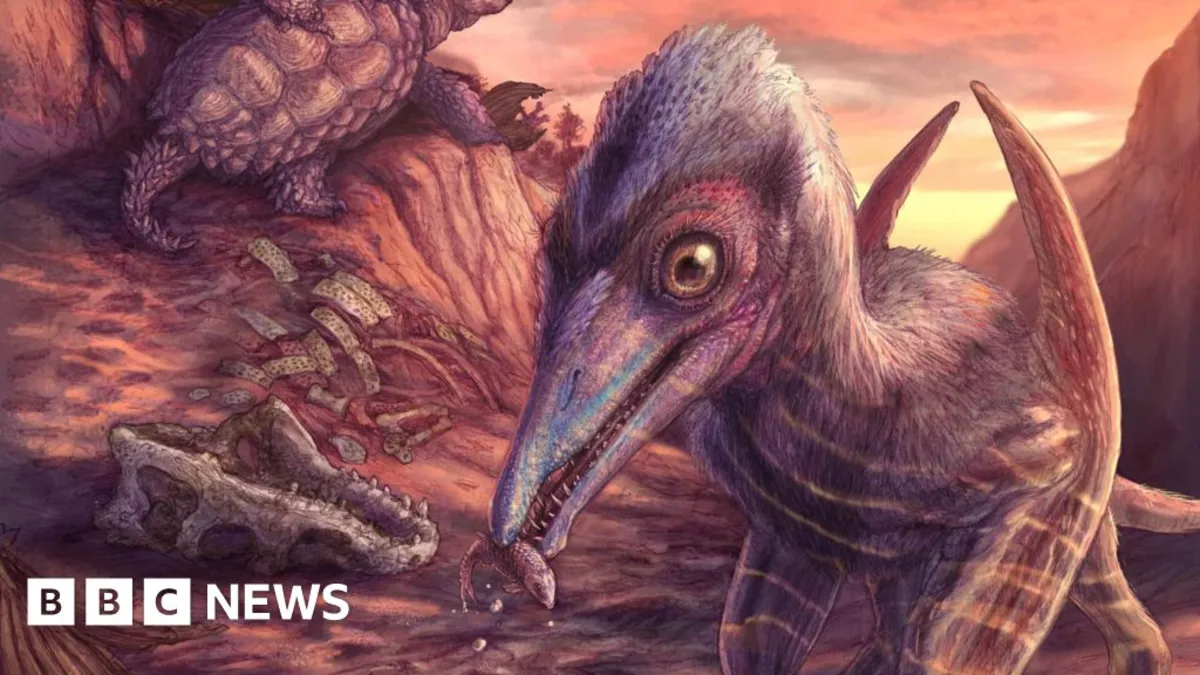
In a groundbreaking revelation, scientists have identified a new species of pterosaur, a remarkable flying reptile that soared above the dinosaurs over 200 million years ago. The jawbone of this ancient creature was discovered in Arizona back in 2011, but it wasn't until recent advancements in modern scanning techniques that researchers could ascertain its classification as a species new to science.
Leading the research team from the Smithsonian's National Museum of Natural History in Washington, D.C., scientists have named this prehistoric winged wonder Eotephradactylus mcintireae, which translates to "ash-winged dawn goddess." This name pays homage to the volcanic ash that played a crucial role in preserving its bones within an ancient riverbed. The findings are detailed in the latest issue of the Proceedings of the National Academy of Sciences.
At approximately 209 million years old, Eotephradactylus mcintireae is now considered the earliest pterosaur identified in North America. Dr. Kligman, a key member of the research team, explained that the bones of Triassic pterosaurs are typically small, thin, and often hollow, making them vulnerable to destruction before they can become fossilized. The significant discovery was made at a fossil bed located in the desert landscape of the Petrified Forest National Park.
Millions of years ago, this area was a vibrant riverbed where layers of sediment slowly trapped and preserved a variety of organic materials, including bones, scales, and other remnants of life during that era. The river once flowed through the central region of the ancient supercontinent of Pangaea, where all of Earth's landmasses were joined together.
The jawbone of the pterosaur is just one part of a diverse collection of fossils unearthed at the site, which includes bones, teeth, fish scales, and even fossilized droppings, commonly referred to as coprolites. Dr. Kligman noted that the ability to recognize pterosaur bones in these ancient river deposits indicates that there may be other similar deposits worldwide that could also harbor pterosaur fossils.
Studying the teeth of Eotephradactylus mcintireae has provided critical insights into the diet of this seagull-sized pterosaur. Dr. Kligman observed that the teeth exhibited an unusual degree of wear at their tips, suggesting that this ancient reptile fed on prey with hard body parts. The most plausible diet would have included primitive fish, which were likely covered in bony scales, making them an ideal target for this agile predator.
The discovery site has preserved a remarkable snapshot of an ancient ecosystem, showcasing a diverse array of creatures that thrived alongside now-extinct species, including giant amphibians and ancient relatives of crocodiles. Additionally, the fossil bed reveals the coexistence of these extinct animals with species recognizable today, such as frogs and turtles. Dr. Kligman emphasized that this fossil bed holds vital evidence of an evolutionary transition that occurred 200 million years ago, illustrating how groups that flourished later coexisted with older species that did not survive past the Triassic period.
Fossil beds like this one are invaluable for understanding the dynamics of ancient ecosystems and the relationships between different species. The discovery of Eotephradactylus mcintireae not only enriches our knowledge of pterosaurs but also underscores the significance of preservation sites in piecing together the history of life on Earth.